Abstract
Prolonged exposure to antigens may result in high IgG4 antibody titres as was shown in a previous paper (Aalberse et al., 1983b). In novice bee keepers, a shift in the IgG1/IgG4 ratio of the response against phospholipase-A (PLA; a major component of bee venom) occurred. This resulted in an IgG4-dominated response after approximately 2 years of bee-keeping experience. Subject of the present study was the influence of relatively high concentrations of IgG4 antibodies on the biological activity of immune complexes. In the PLA antigen model, it was demonstrated that IgG4-containing immune complexes do not activate complement and that IgG4 antibodies effectively inhibit immune precipitation and complement activation by IgG1 antibodies. Evidence is provided that IgG4 antibodies inhibit binding of C1q to IgG1 in mixed, IgG1- and IgG4-containing complexes. It is proposed that IgG4 antibodies protect against the biological effects of the complement-fixing IgG subclasses. For this reason, determination of the total IgG response or just determination of antibody activity in the complement-fixing isotypes is insufficient in immune-complex diseases. The modulating effect of the non-complement-fixing isotypes should be taken into account to predict the biological activity of the immune complexes.
Full text
PDF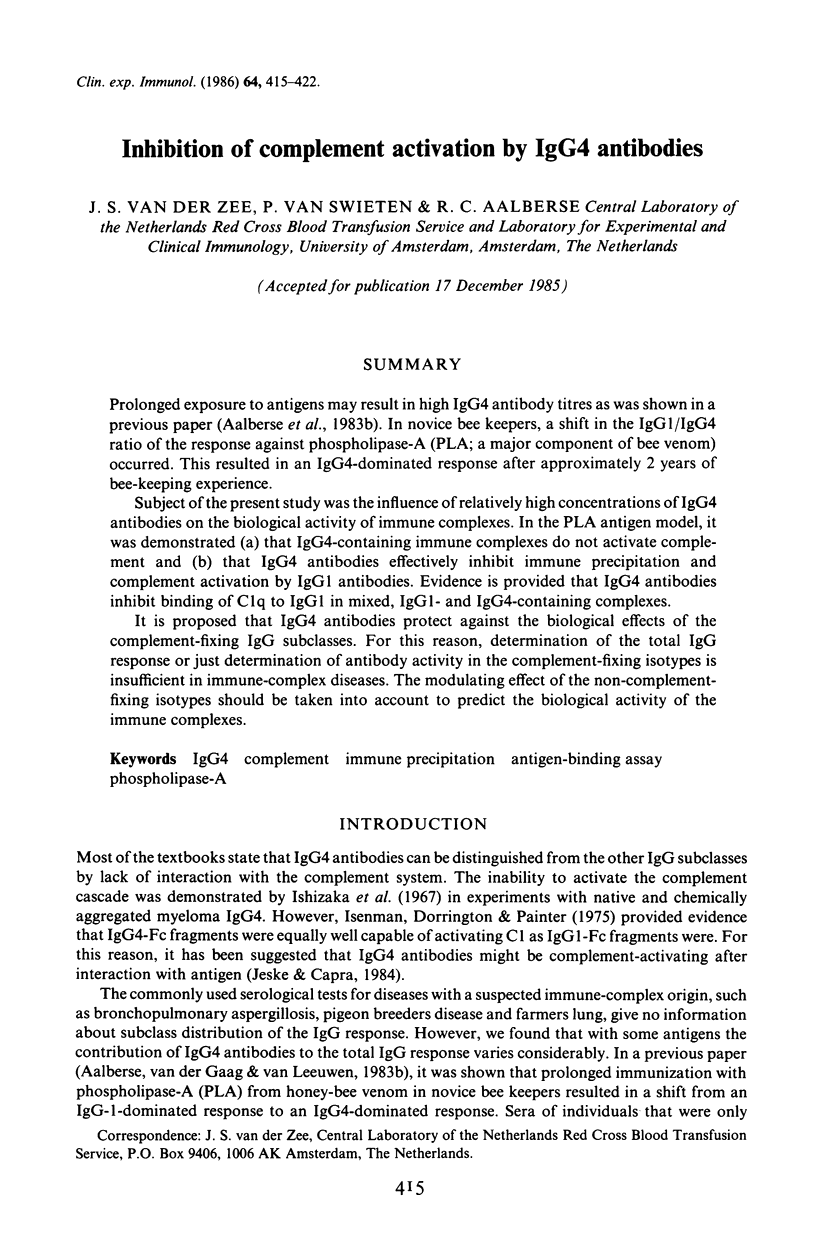
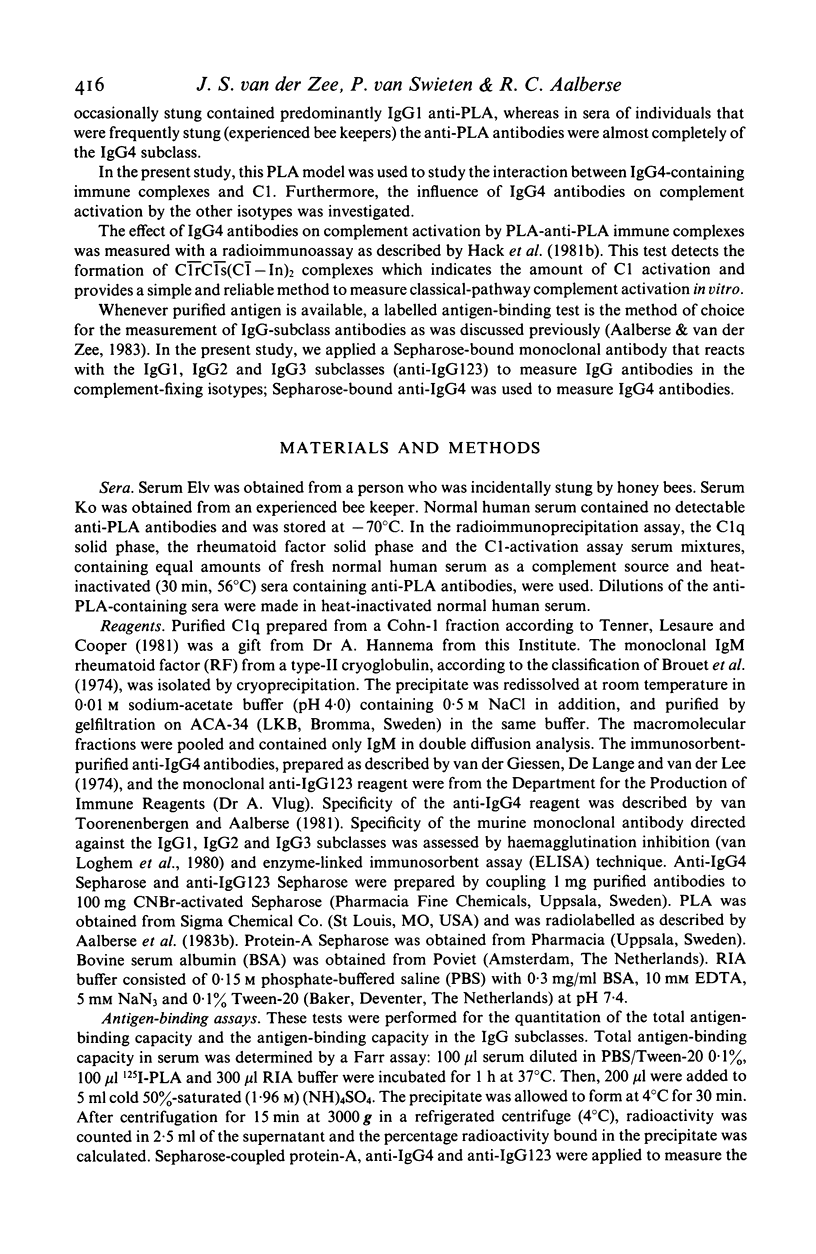
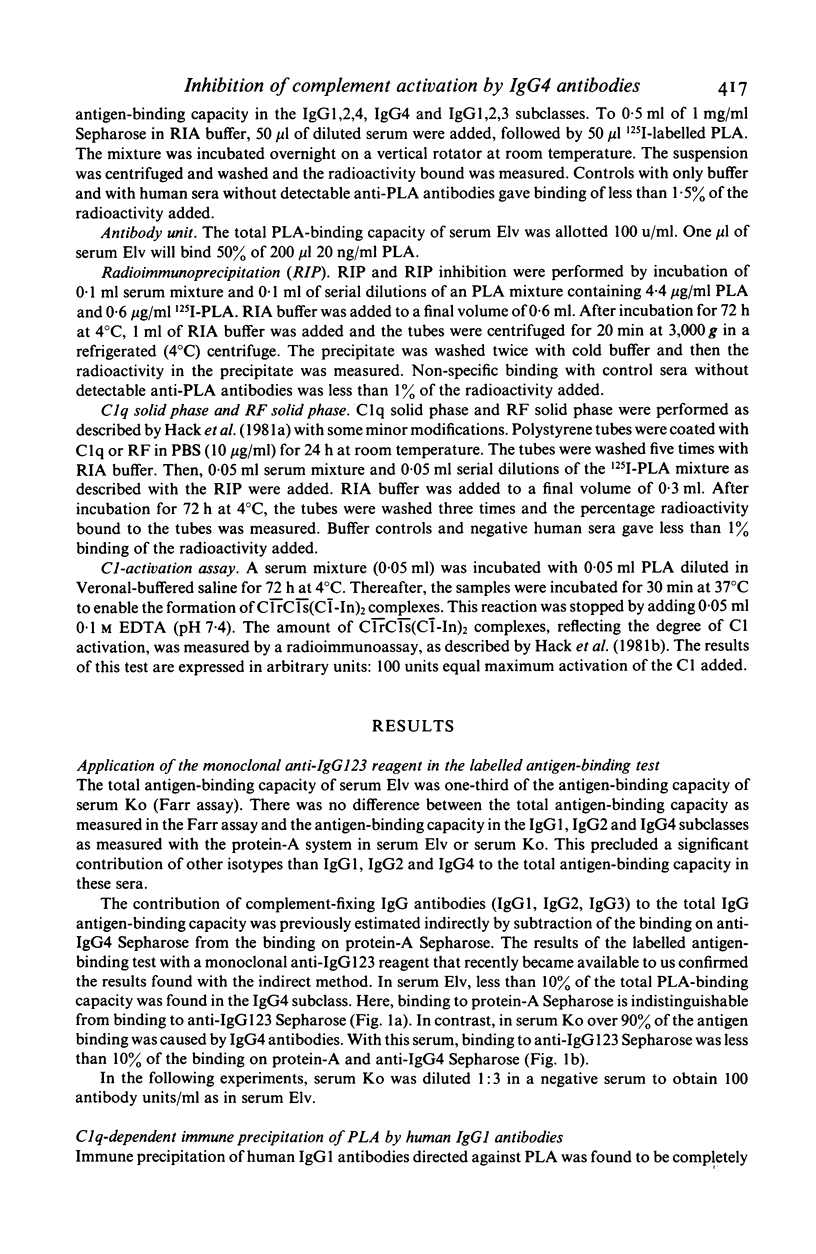
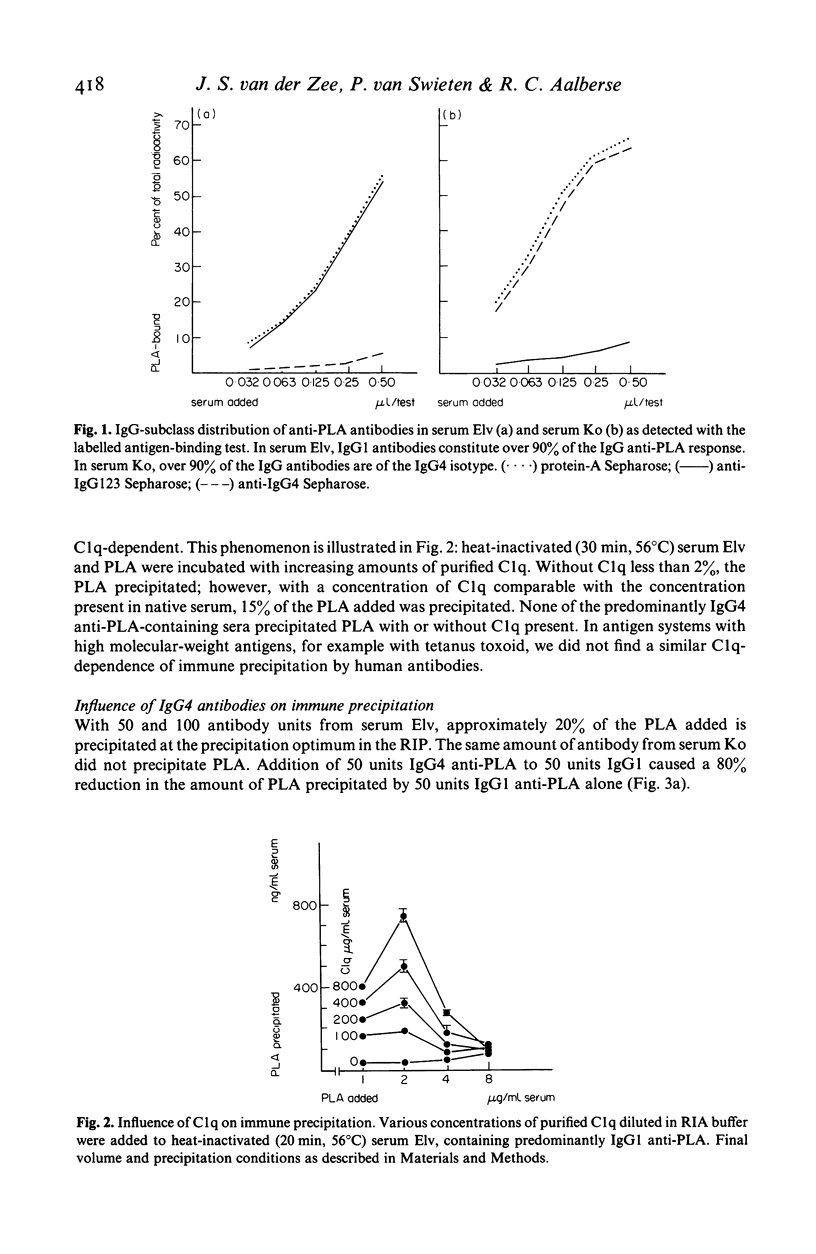
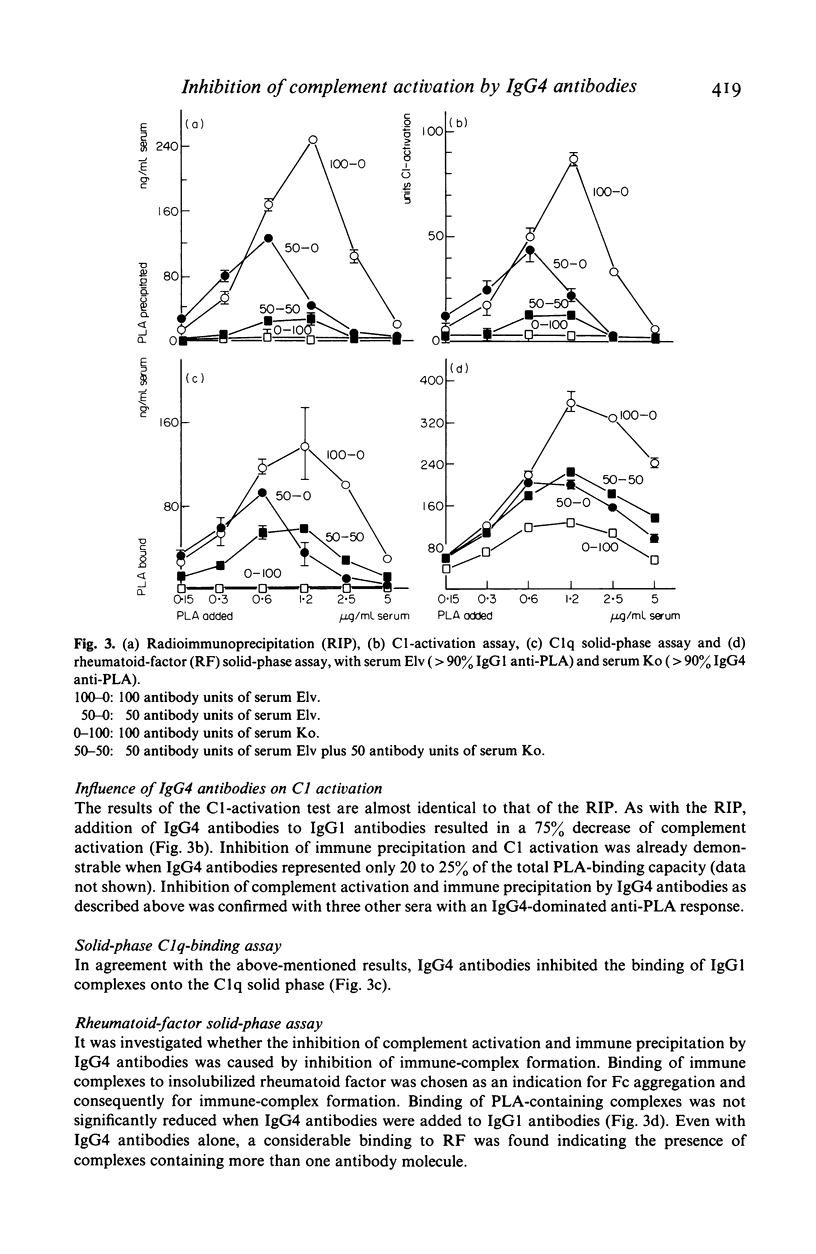
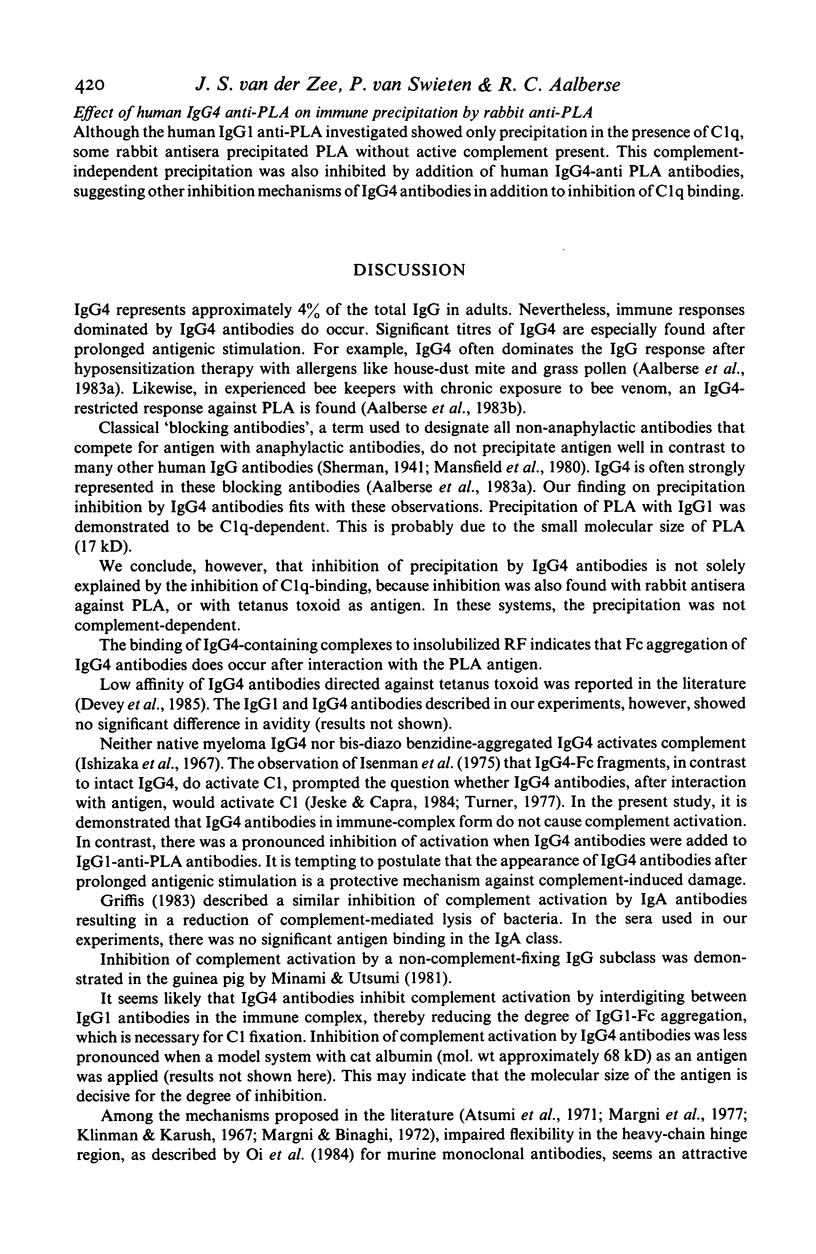
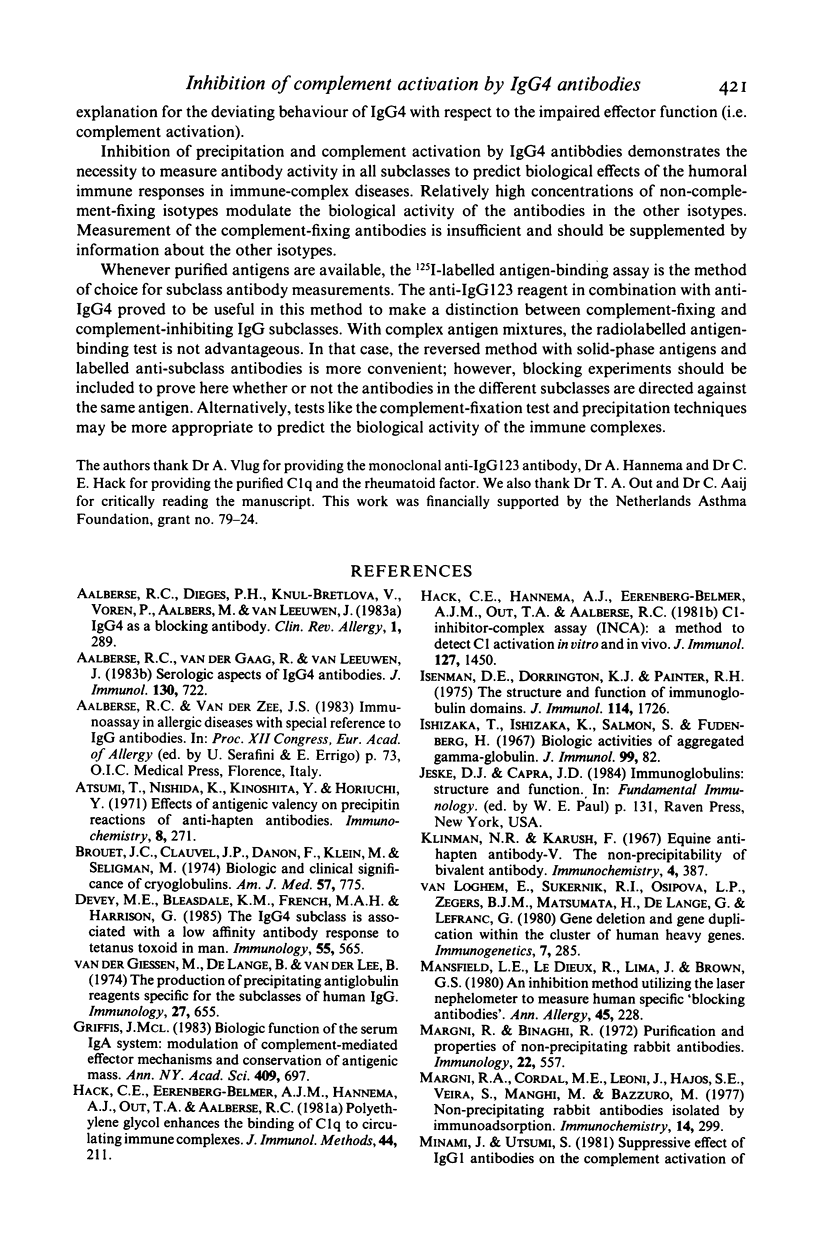
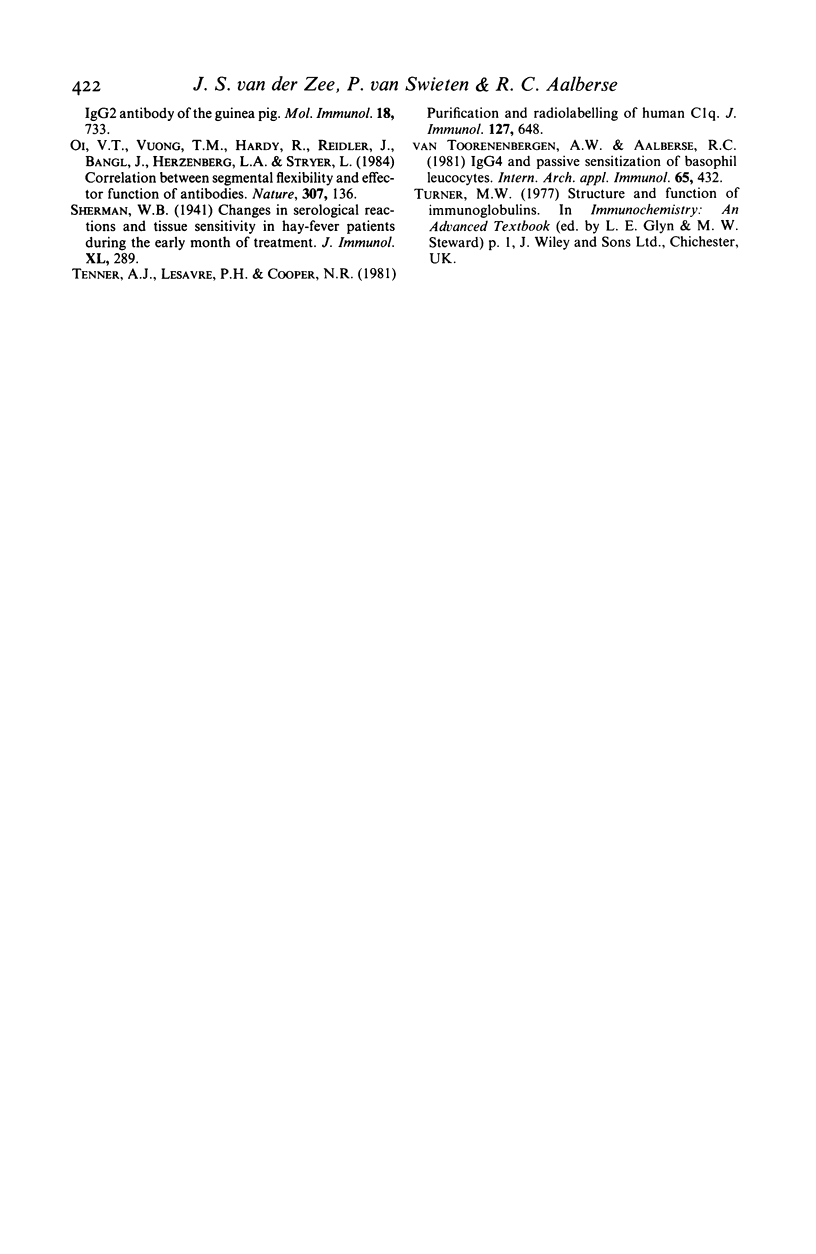
Selected References
These references are in PubMed. This may not be the complete list of references from this article.
- Aalberse R. C., Dieges P. H., Knul-Bretlova V., Vooren P., Aalbers M., van Leeuwen J. IgG4 as a blocking antibody. Clin Rev Allergy. 1983 Jun;1(2):289–302. doi: 10.1007/BF02991163. [DOI] [PubMed] [Google Scholar]
- Aalberse R. C., van der Gaag R., van Leeuwen J. Serologic aspects of IgG4 antibodies. I. Prolonged immunization results in an IgG4-restricted response. J Immunol. 1983 Feb;130(2):722–726. [PubMed] [Google Scholar]
- Atsumi T., Nishida K., Kinoshita Y., Horiuchi Y. Effect of antigenic valency on precipitin reactions of anti hapten antibodies. Immunochemistry. 1971 Mar;8(3):271–279. doi: 10.1016/0019-2791(71)90482-4. [DOI] [PubMed] [Google Scholar]
- Brouet J. C., Clauvel J. P., Danon F., Klein M., Seligmann M. Biologic and clinical significance of cryoglobulins. A report of 86 cases. Am J Med. 1974 Nov;57(5):775–788. doi: 10.1016/0002-9343(74)90852-3. [DOI] [PubMed] [Google Scholar]
- Devey M. E., Bleasdale K. M., French M. A., Harrison G. The IgG4 subclass is associated with a low affinity antibody response to tetanus toxoid in man. Immunology. 1985 Jul;55(3):565–567. [PMC free article] [PubMed] [Google Scholar]
- Hack C. E., Hannema A. J., Eerenberg-Belmer A. J., Out T. A., Aalberse R. C. A C1-inhibitor-complex assay (INCA): a method to detect C1 activation in vitro and in vivo. J Immunol. 1981 Oct;127(4):1450–1453. [PubMed] [Google Scholar]
- Isenman D. E., Dorrington K. J., Painter R. H. The structure and function of immunoglobulin domains. II. The importance of interchain disulfide bonds and the possible role of molecular flexibility in the interaction between immunoglobulin G and complement. J Immunol. 1975 Jun;114(6):1726–1729. [PubMed] [Google Scholar]
- Ishizaka T., Ishizaka K., Salmon S., Fudenberg H. Biologic activities of aggregated gamma-globulin. 8. Aggregated immunoglobulins of different classes. J Immunol. 1967 Jul;99(1):82–91. [PubMed] [Google Scholar]
- Mansfield L. E., Le Dieux R., Lima J., Brown G. S. An inhibition method utilizing the laser nephelometer to measure human specific "blocking antibodies". Ann Allergy. 1980 Oct;45(4):228–230. [PubMed] [Google Scholar]
- Margni R. A., Cordal M. E., Leoni J., Hajos S. E., Veira S., Manghi M., Bazzurro M. Non-precipitating antibodies isolated by immunoadsorption. Immunochemistry. 1977 Apr;14(4):299–303. doi: 10.1016/0019-2791(77)90253-1. [DOI] [PubMed] [Google Scholar]
- Margni R., Binaghi R. Purification and properties of non-precipitating rabbit antibodies. Immunology. 1972 Apr;22(4):557–563. [PMC free article] [PubMed] [Google Scholar]
- Minami J., Utsumi S. Suppressive effect of IgG1 antibody on the complement activation of IgG2 antibody of the guinea pig. Mol Immunol. 1981 Aug;18(8):733–740. doi: 10.1016/0161-5890(81)90065-1. [DOI] [PubMed] [Google Scholar]
- Oi V. T., Vuong T. M., Hardy R., Reidler J., Dangle J., Herzenberg L. A., Stryer L. Correlation between segmental flexibility and effector function of antibodies. Nature. 1984 Jan 12;307(5947):136–140. doi: 10.1038/307136a0. [DOI] [PubMed] [Google Scholar]
- Tenner A. J., Lesavre P. H., Cooper N. R. Purification and radiolabeling of human C1q. J Immunol. 1981 Aug;127(2):648–653. [PubMed] [Google Scholar]
- van Loghem E., Sukernik R. I., Osipova L. P., Zegers B. J., Matsumoto H., de Lange G., Lefranc G. Gene deletion and gene duplication within the cluster of human heavy-chain genes. Selective absence of IgG sub-classes. J Immunogenet. 1980 Aug;7(4):285–299. doi: 10.1111/j.1744-313x.1980.tb00722.x. [DOI] [PubMed] [Google Scholar]
- van Toorenenbergen A. W., Aalberse R. C. IgG4 and passive sensitization of basophil leukocytes. Int Arch Allergy Appl Immunol. 1981;65(4):432–440. doi: 10.1159/000232784. [DOI] [PubMed] [Google Scholar]
- van der Giessen M., de Lange B., van der Lee B. The production of precipitating antiglobulin reagents specific for the subclasses of human IgG. Immunology. 1974 Oct;27(4):655–663. [PMC free article] [PubMed] [Google Scholar]


